The Stunning New Lotus Evora 2+2
With class leading driving dynamics, fuel economy and
emissions of just 205 g/km of CO2, the new Lotus Evora
raises the bar for world class high performing sportscars.
The first all-new Lotus since the iconic Elise roadster made its debut in 1995,
the Evora enters the sports car market as the world's only production midengined
2+2. The Evora provides a tremendously rewarding driving
experience: the mid-engined layout gives exceptional agility and the Lotus
engineered suspension ensures incredible ride and handling. Powered by a
Lotus-tuned 3.5-litre V6 engine producing 280 PS, and weighing just 1350 kg
(prototype specification)*, the Evora delivers an exhilarating experience true to
the Lotus DNA characteristics.
With the zero to 100 km/h sprint taking place in just over 5 seconds, a top
speed of over 260 km/h (prototype specification)* and an Official European
Combined Cycle fuel economy just 8.7 litres / 100 km and emissions of just
205 g/km CO2 the Evora stays true to the ethos of performance through light
weight. The other economy figures are equally impressive with Official
European Urban Cycle of 12.4 litres / 100 km and 6.5 litres / 100 km for the
Official European Extra Urban Cycle all combined with exceptional ride and
handling.
Because one of the roles of the Evora is to attract new lifestyle customers, as well
as performance aficionado's to the Lotus brand, the Evora offers a more refined
ownership experience than Lotus' existing smaller four cylinder models. Its
elegantly styled cabin is beautifully trimmed and its equipment list includes
contemporary features such as an advanced touchscreen multi-media system
and electric power-fold door mirrors. Careful attention has also been paid to its
ease of use. with wider, taller door apertures, narrower sills and higher seating
position making getting in and out of the cabin a less athletic undertaking than it is
in Lotus' smaller sports cars (Elise, Exige, Europa and 2-Eleven), whilst the design
of the cabin itself will accommodate two 99th percentile (6ft 5in tall) American
males in the front seats.
The 'convenience factor' of the Evora extends to all areas of the car. For instance,
beneath the skin the entire front-end structure is a high tech aluminium "sacrificial"
modular unit, with bolt on attachment to the main extruded aluminium tub. This
modular unit is not only designed to deform for maximum safety, and to make the
production assembly process more efficient, but also to reduce repair costs in the
event of a frontal impact.
The Evora has been designed with global automotive regulations in mind, and
future derivatives are planned, these including amongst others, a convertible at a
later stage of the six year lifecycle span.
The Evora will be hand crafted and built on a dedicated new assembly line within
Lotus' advanced manufacturing facility at Hethel in the East of England; capacity
limitations will restrict production to less than 2000 cars a year, thus ensuring this
dynamic new sports car's rarity and exclusivity.
Mike Kimberley, CEO of Group Lotus plc, has this to say about the exciting new
model: "The Evora is the biggest "milestone" Lotus has achieved since the Elise
was born 13 years ago and is the start of our bold five year strategic business
plan. A plan which includes the introduction of three new cars and advanced new
technologies to many more markets around the world. The Evora also represents
Lotus core values of performance through light weight and efficiency, proving that
you can have performance, fuel economy, elegant design and practicality all in a
class leading mid-engine 2+2 sportscar, whilst also meeting all global safety and
homologation standards"
Mike Kimberley continues, "Looking to the future, we will continue to research,
develop and produce lighter, more efficient vehicles which are linked to our
extensive and well-regarded work on all aspects of future fuels, alternative
engines and electric and hybrid vehicle propulsion system solutions. We all have
an environmental responsibility to future generations and the Evora is another
example where Lotus is seen to make significant steps towards improving the
efficiency and sustainability of the motorcar, helping 'UK Ltd' to the forefront of
high technology in the motor industry."
THE EVORA IN DETAIL
Style or function? Have both…
Designed in-house by Lotus Design, the sleek and athletic form uses fluid forms
and crisp surfaces to communicate velocity, agility and sophistication. Low and
wide with modern cab forward proportions, muscular rear haunches and function
optimised hip air intakes shows this is clearly a serious mid engined sportscar that
skilfully hides the practicality of its two plus two accommodation.
Russell Carr, Head of Lotus Design, led the Evora's design team with Steven
Crijns, Design Manager responsible for the exterior and Anthony Bushell, Senior
Designer, responsible for the interior.
"A cornerstone of the design's success was working closely with the technical
team and board to develop a package that allowed us to get the proportions
correct," says Head of Design Russell Carr, "The asymmetric wheel sizes, the
short rear overhang, long front overhang and cab forward visor screen all
contribute to giving the car visual movement and an agile stance. This is incredibly
important to us because we want the car's aesthetics to communicate its driving
characteristics"
Lotus products have always embodied a perfect balance between form and
function and the Evora successfully continues this heritage. "We never lost sight of
the fact that, although this car must provide real world useability, sportscars are
emotional purchases and that you have to seduce the customer through beguiling
looks and exotic persona. We are, therefore, very proud that we have been able to
use technical and user functionality to positively drive the design in key areas and
create some of the car's most distinctive features", says Carr.
Ingress and egress, for example, dictated a minimal "step-over" to get into the
Evora. We simply cut away the surface under the door and created a unique and
dramatic piece of sculpture that enhances the stance of the car as well as its
usability.
Elsewhere, aerodynamic considerations for drag, down force and cooling had
significant but positive influence on the overall form and details such as air
intakes. A desire to create balanced down force that increases cornering
performance led to the adoption of the Lotus "signature" top exit radiator vent, race
car inspired diffuser and "floating rear wing". Drag limitation, drove the dramatic
tear-dropped cabin layout and the curvaceous plan view has given the car a more
muscular rear shoulder and conveys a level of sophistication appropriate to this
market segment. "We believe that our designs should be honest as well as
dramatic and so we are really pleased with the fact that these iconic features all do
a real job" says Steven Crijns, Design Manager.
This inherent understanding of the relationship between the technical and the
aesthetic paid dividends the first time a full-scale model of the Evora was
windtunnel tested – only minimal adjustments were required to the car's
aerodynamic package to meet the targets for downforce and stability.
Steve Crijns continued, "Overall the design language shows a clear DNA link with
its Lotus siblings, whilst establishing its own distinctive and contemporary theme.
The undulating shoulder line is brilliantly mirrored in the lower part of the bodyside
by the cut -away sill that creates a torseau-like muscularity."
"The front three-quarter view is really powerful" Russell Carr continues, "Your eye
is drawn effortlessly, from our signature oval mouth, rearward by fluid surfaces
and fast lines that create a sense of speed even when the car is stationary. From
this angle you can also see how dramatically the visor screen sweeps around the
teardrop form of the cabin and the gently waisted plan shape perfectly
accentuates the muscularity of the rear fender. This is unmistakeably mid engined
language and the Evora is unmistakeably Lotus."
The view from the rear three-quarters is just as striking. The tapered cabin,
diffuser, floating wing, centrally mounted twin tailpipes and distinctive engine bay
vents all combine to create a completely unique look.
Moving right inside…
The design language of the interior reflects that of the exterior – simple, fluid
surfaces, soft forms and crisp feature lines wrap around the cabin cosseting the
occupants. Unlike recent Lotus products that use a race car inspired, technical
minimalism, the Evora employs a softer approach that utilises premium quality
materials and finishes to create a contemporary but luxurious ambience that is
unique to Lotus products, an elegance in its simplest form.
It is, according to Russell Carr, "A huge departure from what people might expect
based on Lotus' recent past. The CEO wanted the Evora's cabin to feel very
special and to be surprising as well as sporty. Precision engineered metal inserts
and quality edge-lit switches are brilliantly juxtaposed against soft hand-stitched
leather surfaces to give a modern interior with a classic twist."
Russell Carr continues, "The flat bottomed steering wheel, figure hugging sports
seats, contemporary instrumentation and ergonomically positioned controls
provide an intuitive environment that instantly forms a connection between driver
and car ensuring that it becomes an extension of his or her body."
Anthony Bushell, Senior Designer, explained about the choice of materials in the
Evora's interior, "'Tactile' quality is incredibly important within this segment so in
the Evora interior we use honest premium materials. Much of the switchgear is
bespoke, and every metallic component is, actually, metal."
For the Premium Pack focused courtesy lighting is used throughout the interior,
giving a spectacular illuminated feel to the sculpture design features of the cabin.
The extensive use of handcrafted, premium leather differentiates the Evora from
other Lotus products and such is its importance to the character of the car that an
entire new trim shop has been built at the Lotus Headquarters in the UK,
dedicated to its production.
Even the entry level versions of the Evora will feature leather seats together with,
upper door trim panels and facia upholstered in leather, but it is expected that
most customers will opt for the full hide treatment and accent lighting available in
the Premium Pack. Along with a range of four leather colours available in the
Premium Pack, customers will have the opportunity to personalise their Evora with
a wide range of paints in the Metallic, Lifestyle and Premium pallets.
High-tech treats
Contemporary technology also features in the Evora's cabin with the optional Tech
Pack and further standalone options. Part of the Tech Pack is a newly developed
Alpine multi-media system with a 7 inch touch-screen providing advanced audio,
satellite navigation, video, Bluetooth** hands-free telephone and iPod***
connectivity functions, the screen also serves as a monitor for the Evora's optional
reversing camera. A secondary handheld satellite navigation element of the
system is removable, allowing you to programme it from the comfort of your home,
or take it with you to continue your journey in an unfamiliar pedestrian location.
The optional IMPRINT Alpine audio set-up is one of the most sophisticated
automotive systems in the world. Using MultEQ sound enhancement technology, it
is able to cancel out sound imbalances, caused by the cabin window glass, that
creates echoes or carpets that suppress mid-range frequencies, resulting in
amazingly crisp, clear, undistorted sound reproduction wherever you are seated in
the car.
A bespoke air-conditioning system developed by Lotus and Bergstrom engineers
is standard on all models, and has been designed for the hottest climate or the
closest humidity to ensure maximum occupant comfort. Lotus traction control is
standard fitment and onboard tyre pressure monitoring will also be available
(except in Japan).
One size fits all
The front seats themselves are very supportive and leather clad with a lightweight
manual mechanism for fore and aft and rake angle adjustment, designed to give a
supported driving position.
The rear seats of 2+2 versions of the Evora are intended for children and smaller
adults. There will also be a two-seater derivative with a luggage shelf in the back
at a later date. To maximise comfort in the rear, there's a decent amount of
footroom under the seats in front, while both back seats feature ISOFIX mountings
for secure child seat fitment.
When unoccupied, the rear seats provide a convenient stowage area, adding to
the Evora's appeal as an everyday car. The 160 litre boot, which ingeniously
features a fresh air cooling system to reduce the effect of any heat ingress from
the engine bay, will also accommodate a full set of golf clubs.
Easy in, easy out
With the Elise and its derivatives, the no-compromise character of the car makes
getting in and out across a wide sill and through a comparatively narrow
door/window aperture part of the charm of ownership. For the Evora and its remit
for the serious daily driver, and to attract newcomers to the Lotus brand, greater
convenience and practicality of ingress and egress is provided.
As a consequence the sill is now lower and slimmer (80mm wide compared with
100mm in the Elise), and the whole door aperture taller. The doors open wider
than on the Elise and its siblings, while the height of the front seat is raised by
65mm.
But while The Evora is undeniably more 'lifestyle' in respect of its everyday
practicality, once you're seated behind its semi flat-bottomed steering wheel, it
feels every bit as exotic and sporting as you would expect a Lotus to be.
Safely does it
In common with the Elise and its derivatives, the Evora's bonded extruded
aluminium chassis tub has incredible inherent strength, particularly in regard to
front and side impacts. Additional torsional strength is given to the whole structure
by the tubular steel seatbelt anchorage frame.
Deformable sacrificial aluminium front and steel rear subframe modules are
attached to the tub using joints which are designed to minimise damage to the tub,
protecting the main passenger cell in the event of an accident.
Driver and passenger airbags are standard. The airbag on the passenger side is
cleverly engineered to deploy vertically and then be deflected rearwards by the
windscreen, to provide protection for children as well as adults.
Anti-lock brakes are standard on all models, as is Lotus Traction Control (LTC);
these systems have been specially developed as a collaboration between Lotus
and Bosch engineers and enable up and coming drivers to consistently exploit the
braking and performance capabilities of the Evora, whilst allowing skilled
enthusiasts the freedom to enjoy the full Lotus driving experience.
The chassis: Production Low Volume Versatile Vehicle Architecture
The Evora's chassis is a low investment cost evolution of the Versatile Vehicle
Architecture (VVA) from the Lotus APX concept vehicle previously showcased at
the Geneva Motorshow, and allows for the development of a range of vehicles up
to a gross vehicle weight of 1,900 kg. This architecture has been designed to be
more applicable to mid-volume applications by utilising our low capital investment
manufacturing processes. The Evora structure progresses the Lotus 'bonded and
riveted' technology used in the Elise family of vehicles with new and unique
extrusions and folded panels, whilst providing production build modularity and
lower cost repairs.
The low volume VVA chassis has been designed for scalability so that it can be
extended in width, length and height. The strength and stiffness of the low volume
VVA chassis can be modified cost effectively by varying the wall thickness of the
extrusions, without altering the exterior dimensions. The ability to lengthen or
shorten extrusions with the option to tailor the chassis stiffness, vastly increases
the number of vehicles that can be developed from this vehicle architecture. Front
and mid engine installations have been considered, as well as hybrid and Electric
Vehicle (EV) applications.
The Lotus Evora employs a composite roof as a stressed structural member to
give an exceptional vehicle stiffness of 26,000 Nm per degree. This impressive
stiffness is also thanks in part to the seatbelt anchorage frame, and partly because
the high-tech composite body panels are stressed items. However, despite this
high stiffness, the complete chassis or tub and front and rear modules weight just
200 kg (prototype specification)*, helping to keep the weight of the whole car to
just 1350 kg (prototype specification)*.
To deliver this high performance structure, bonded and riveted high grade
aluminium extrusions and simple and elegant folded sheet elements are used in
the lower structure, building upon award winning Lotus research projects in this
field. Lotus pioneered the technology of bonded aluminium extrusions for use in
road vehicles and has successfully developed high performance cars for other car
companies around the world using these techniques.
The central tub is attached to an extruded aluminium subframe at the front and a
lightweight welded steel subframe at the rear. These subframe modules also offer
advantages in terms of convenience and low cost of repair, and during
manufacturing can be brought to the production line fully assembled, ready to be
attached thereby improving the overall efficiency of space and time of assembly.
The high technology Lotus Evora chassis is manufactured at the new Lotus
Lightweight Structures Limited (LLS) facility in Worcester, UK. LLS employs 120
skilled engineers, technicians and sales staff and will manufacture all the Lotus
aluminium structures, including those for the Elise, Exige, 2–Eleven and Europa
and aluminium components for Lotus' extensive global client base.
Suspended & animated
To achieve exceptionally high driving dynamics and great levels of driver
involvement, Lotus has engineered and developed completely new suspension
systems for use on the Evora.
The Evora suspension wishbones are forged from aluminium to reduce the
unsprung mass. These are similar in weight to the steel items found on the much
smaller Elise, Exige and Europa vehicles, but are stiffer and have a much
increased vehicle weight capacity. They are attached to the front and rear
modules via Lotus designed bushes. The Evora will use Bilstein high performance
dampers and Eibach springs with unique dual path top mounts for optimised
vehicle refinement. Hydraulically assisted power steering is provided by a Lotus
tuned TRW steering rack to give renowned Lotus steering feel and precision to
place the Evora exactly where you want it to be when cornering.
All in all, the Evora delivers exceptional performance. It has incredible Lotus
handling and provides unsurpassable driving pleasure and confidence to drivers at
all levels of skill. In fact, word from the ride and handling team is that the new car
is likely to become a class standard-setter in respect to it's "over the road speed
and agility feel".
Stop right now…
Vented brake discs are standard with cross-drilled brake discs forming part of the
Sport Pack, (both are massive 350mm diameter discs on the front and 332mm
diameter at the rear), which when combined with high performance bespoke Lotus
AP Racing 4 pot callipers ensure impressive stopping power.
Everyone connected with the brake testing programme, conducted on the
punishing corners, climbs and descents of the Nürburgring and Stelvio Pass, has
described the brakes as 'phenomenal' with excellent thermal performance and
outstanding feel even after extended sessions of extreme use.
Part of that testing programme was to finalise settings for the ABS system being
developed in conjunction with Bosch. The system is tuned for performance driving
and thus has very high thresholds and operates so progressively that drivers are
often unaware that they have actually triggered the ABS.
Hydraulic Brake Assist (HBA) and Electronic Brake Distribution (EBD) are also
fitted as standard. HBA detects an emergency braking situation and increases
brake pressure up to ABS activation threshold which results in shorter emergency
stopping distances.
Safe. Fun. Lotus Traction Control
The Switchable Lotus Traction Control (LTC) system has been developed
simultaneously with the ABS and works through the engine management system
to reduce power to the rear wheels when required to maintain traction. To maintain
front end traction or to reduce understeer, the LTC will gently reduce engine
torque to stabilise the Evora bringing the front wheels back into line – known as
"Understeer Recognition". Unlike many traction control systems, LTC has been
tuned to complement the skills of the driver without taking over. The Lotus LTC is
active above 5 mph (8 km/h) and operates much more quickly than many brake
based systems. The system can be deactivated completely, giving no traction
control intervention.
A Bosch Electronic Differential Lock (EDL) is fitted as standard to the Lotus Evora.
This advanced technology controls the speed of individual rear wheels through the
precise activation of the rear brakes, slowing an excessively spinning rear wheel
to ensure that traction is maintained without causing detriment to the handling –
often the case with a mechanical limited slip differential.
The Sport Pack option comprises of a switchable sports mode, sports diffuser,
Titanium sports tail pipe, cross drilled brake discs, black callipers and an engine oil
cooler.
As with all Lotus cars, the Evora is very driver focussed and therefore all the
electronic intervention systems can be completely overridden by the driver (apart
from the ABS). In standard mode, all the systems above are in operation; pressing
the sport button (Sport Pack option only) sharpens the throttle response and
increases the engine rev limit. The sports mode traction control is adjusted to give
increased slip and yaw angle before intervening, and also removes the understeer
recognition.
Keeping a grip – 18 inch at the front, 19 inch at the rear.
Tyre choice is a vital component in the ride, handling and steering performance of
every Lotus and for the Evora, Yokohama was chosen as the development
partner. Lotus and Yokohama engineers developed bespoke tyres especially for
the Evora – a 225/40 ZR18 at the front and larger diameter 255/35 ZR19 at the
rear. Both have carcass construction and a rubber compound unique to Lotus and
are identified by the letters 'LTS' on the sidewalls.
The V6 Engine - dual VVT-i ('intelligent' variable valve timing)
The exceptional working relationship that Lotus has enjoyed with Toyota over
several decades, combined with the overwhelmingly enthusiastic reception for the
company's four-cylinder power units in the Elise and Exige, guaranteed the
Japanese giant's inclusion on the shortlist for the Evora engine supplier.
The final choice was Toyota's all-alloy 2GR-FE 3.5-litre V6 DOHC, with dual VVT-i
('intelligent' variable valve timing). Lotus has painstakingly developed its own T6e
engine management software for this engine to optimise its compatibility with the
unique requirements of the Evora to give a peak power output of 280 PS at 6400
rpm, while boosting its maximum torque to 342 Nm at 4700 rpm (prototype
specification)*.
Changes to the engine management and exhaust systems also allow the V6 to rev
more freely and provide rapid throttle response; feedback from the development
team shows that the strength of the engine's mid-range torque means that gutsy
performance will be easily accessible without having to thunder through to the
redline. This makes the Lotus Evora a thoroughly satisfying car for everyday road
use and a rewarding one when you just want to drive.
The 2GR-FE V6 engine is mated to a manual six-speed gearbox, again Toyotasourced.
A close-ratio version of this gearbox will be an option for the even more
sport-focussed driver. Many Lotus owners enjoy the blend of unique performance
and efficiency that the brand's cars offer. True to the Lotus value of "performance
through light weight" CO2 emissions are class leading at 205 g/km while fuel
consumption on the combined cycle is 8.7 l/100 km. Fuel economy for the urban
cycle is 12.4 l/100km with 6.5 l/100km on the extra urban cycle.
What'll she do?
The zero to 100 km/h sprint takes place in just over 5 seconds with a top
speed of over 260 km/h (prototype specification)*.
Test. Test. Then test some more
It's a global car, so the Evora has been tested around the world. From the icy
wastes of the Arctic to the heat of the Australian desert, the high altitude of the
Alps as well as the country roads around the Hethel factory.
A cross functional team comprising of design, CAE and test and development
engineers have been able to develop the Evora into a class leading vehicle in an
exceptionally short space of time. It has spent hours howling around the
Nürburgring and endlessly lapped Lotus's test track at Hethel. By the time the
Evora entered production in February 2009, prototypes had travelled for hundreds
of thousands of miles along some of the worst public roads in the world and been
tortured for as many miles on some of the toughest proving grounds the motor
industry has to offer, including extreme pave tests.
It has been flung into barriers at low and high speeds, at a multitude of angles, it
has even had its roof and doors compressed! By the time the Evora reaches the
UK and Europe Lotus showrooms from May 2009, it will be the most thoroughly
tested Lotus car in the history of Lotus. It will also be one of the company's great
milestones.
Lotus Evora: 205 g/km CO2
8.7 litres / 100 km (32.5 mpg) Combined Cycle
12.4 litres / 100 km (22.8 mpg) Urban Cycle
6.5 litres / 100 km (43.5 mpg) Extra Urban Cycle
* Figures quoted are based on the prototype development cars and may not be
correct for production version of the Evora. Final figures for the production version
will be available from www.grouplotus.com once confirmed.
** Bluetooth is a registered trademark of Bluetooth SIG, Inc. registered in the USA
and other countries.
*** iPod is a registered trademark of Apple Inc. registered in the USA and other
countries.
Photos here:
http://www.autoexpress.co.uk/front_website...0&id=302847







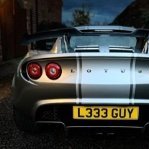
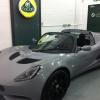
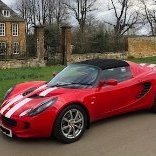
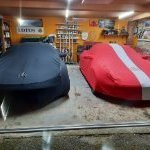


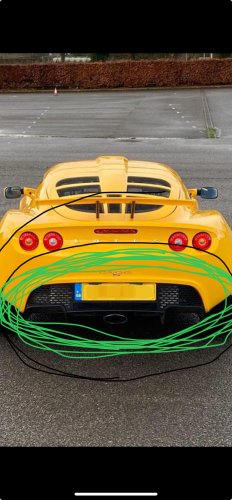
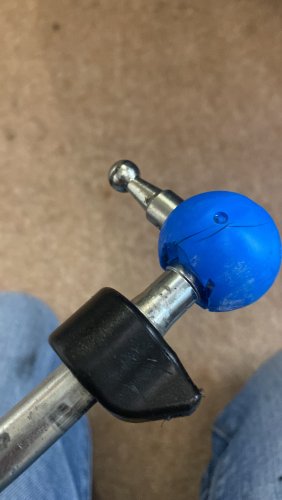
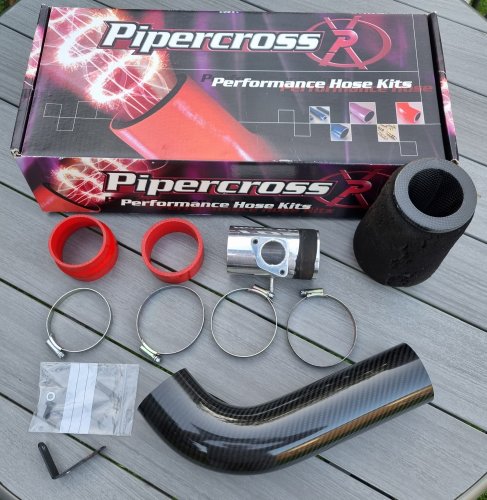
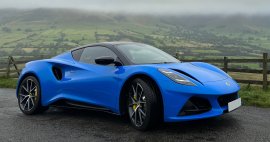
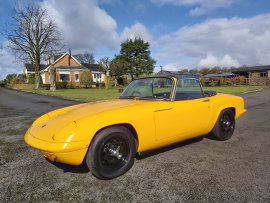
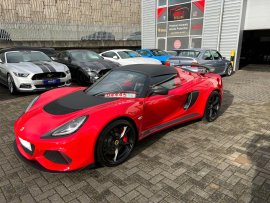

Recommended Comments
There are no comments to display.
Join the conversation
You can post now and register later. If you have an account, sign in now to post with your account.